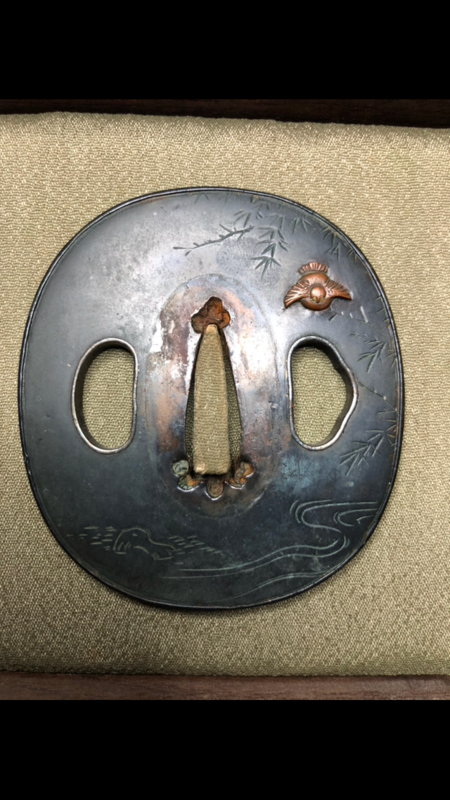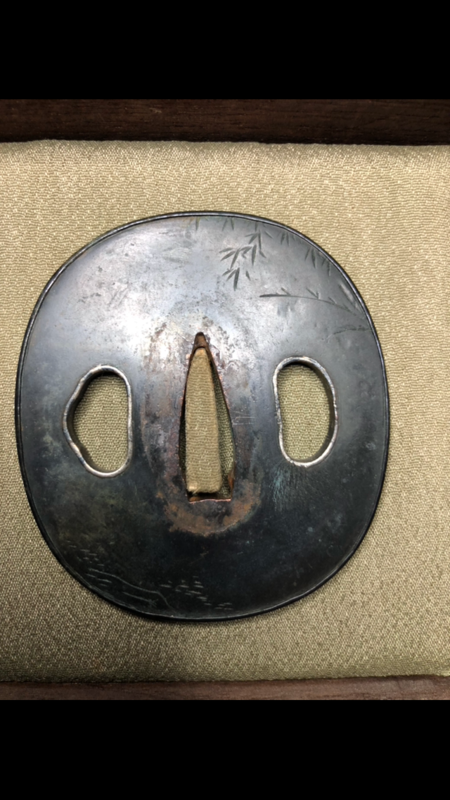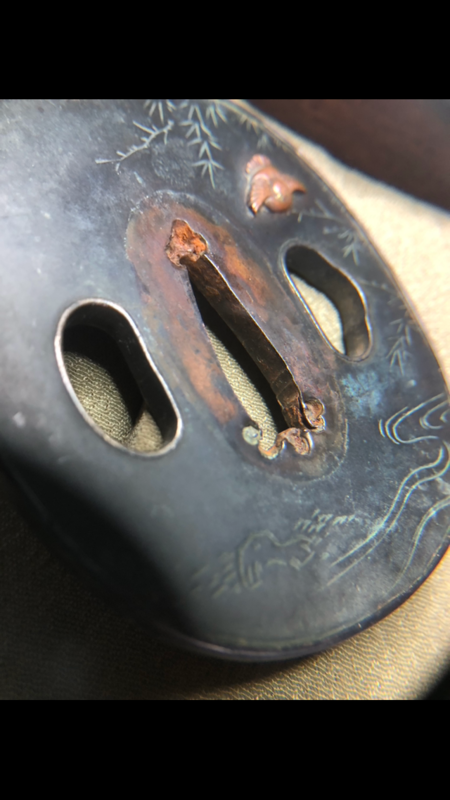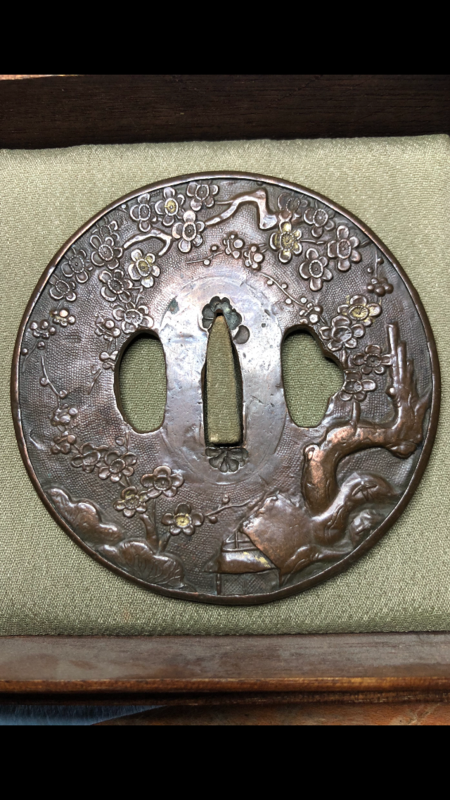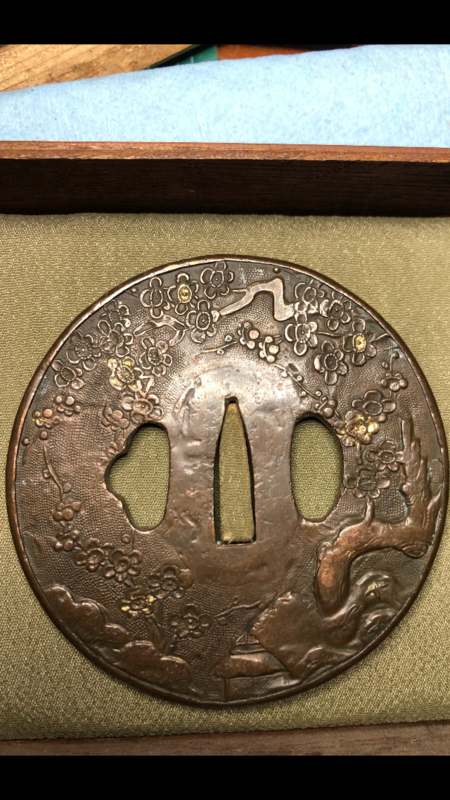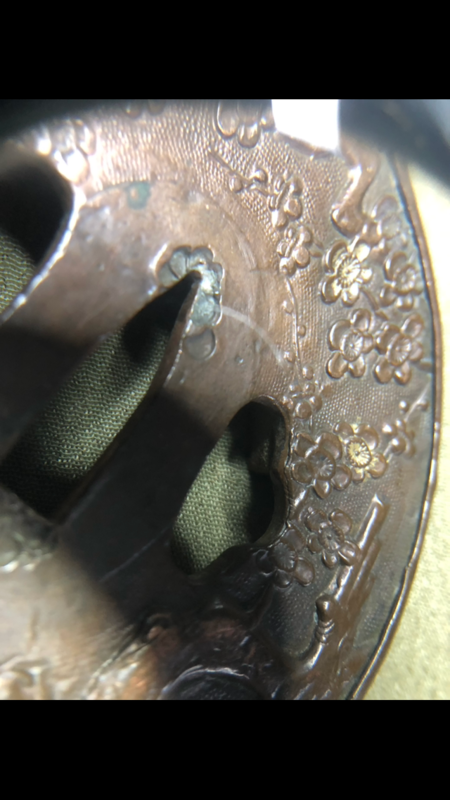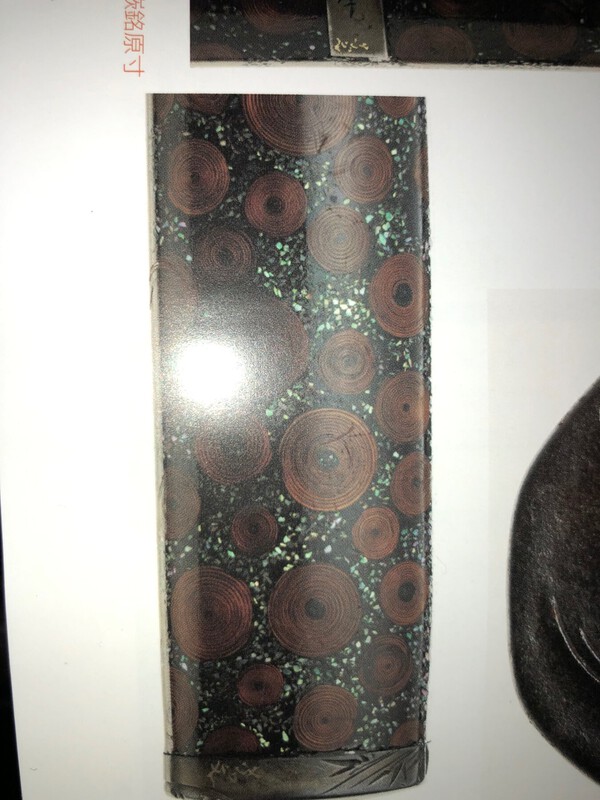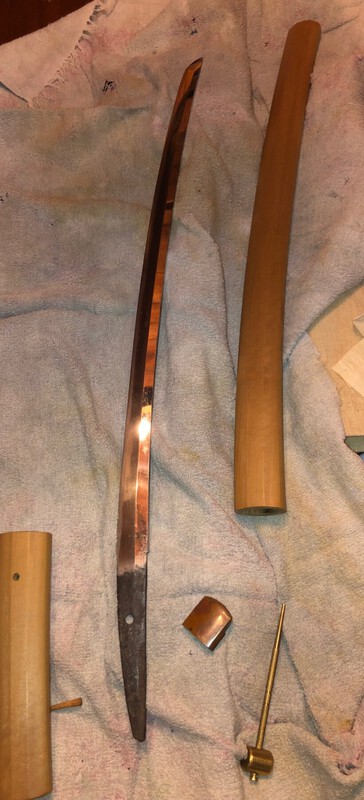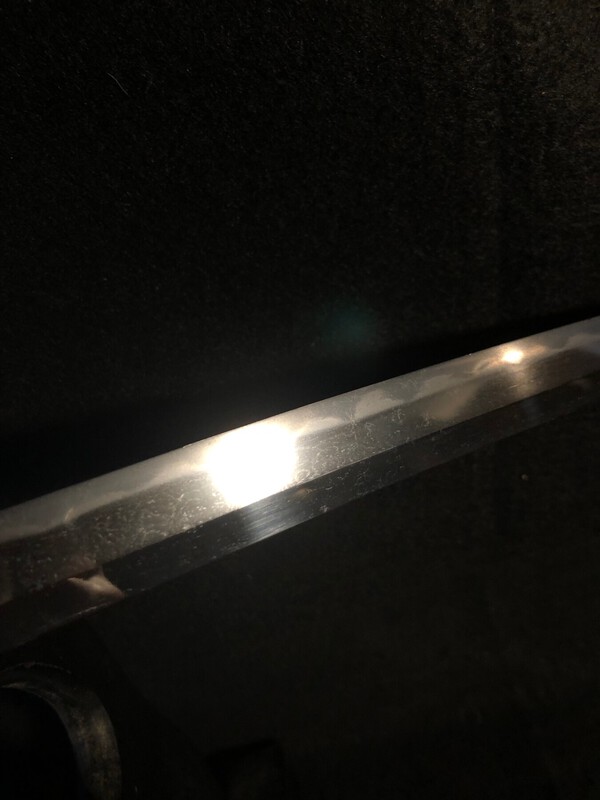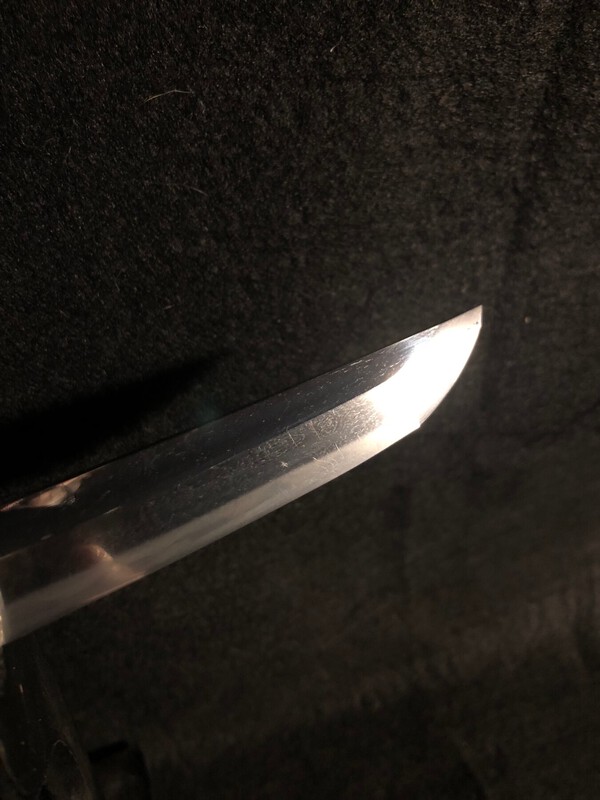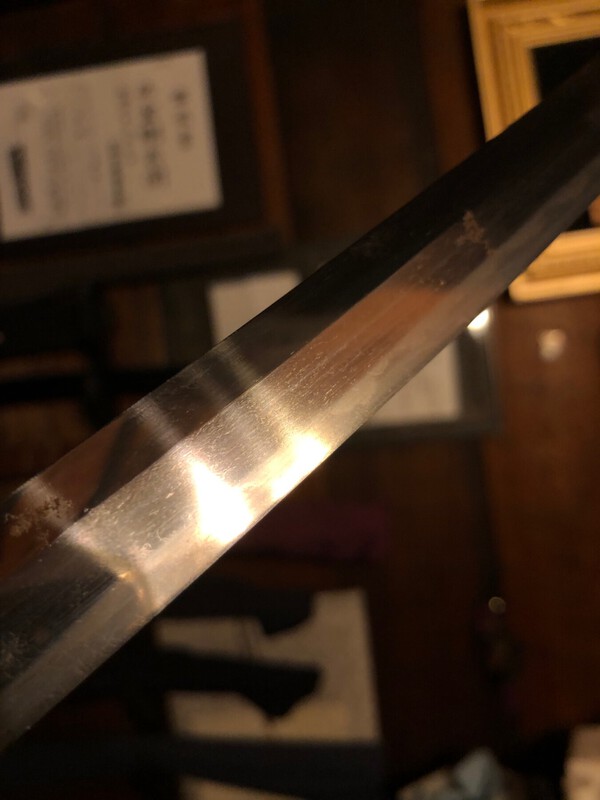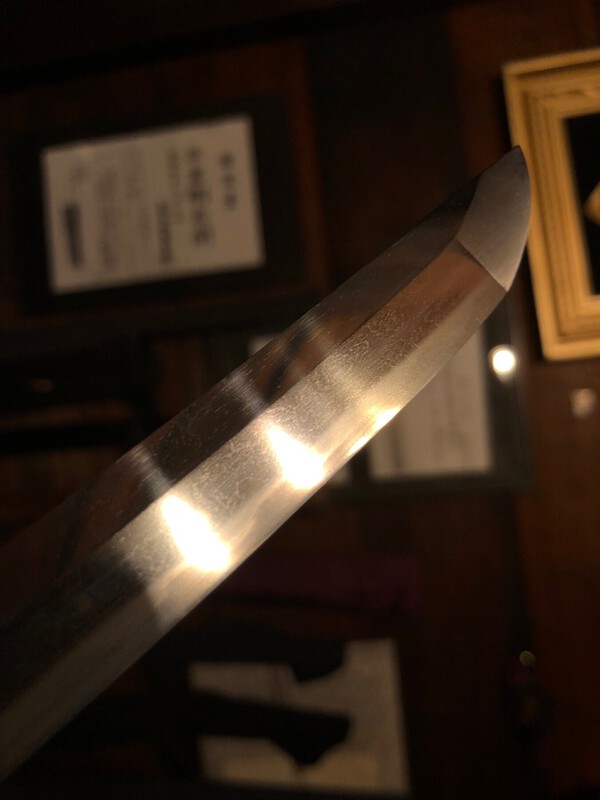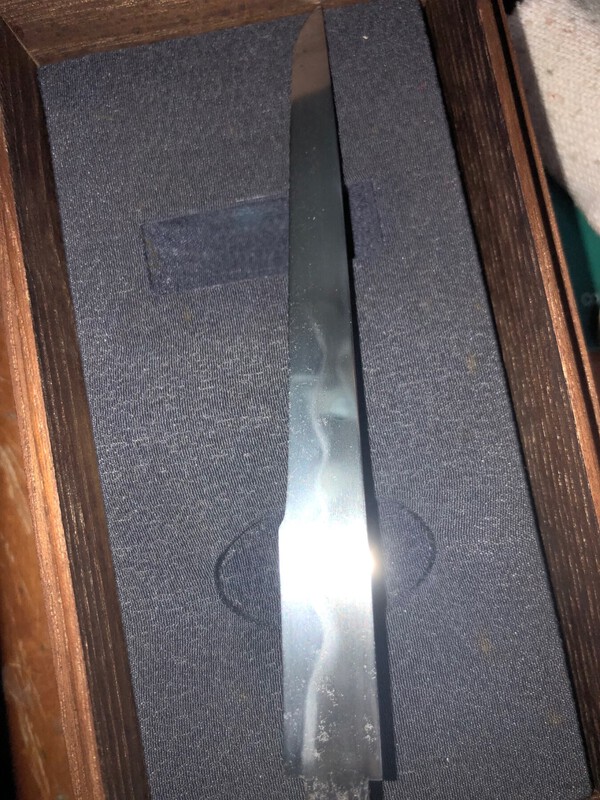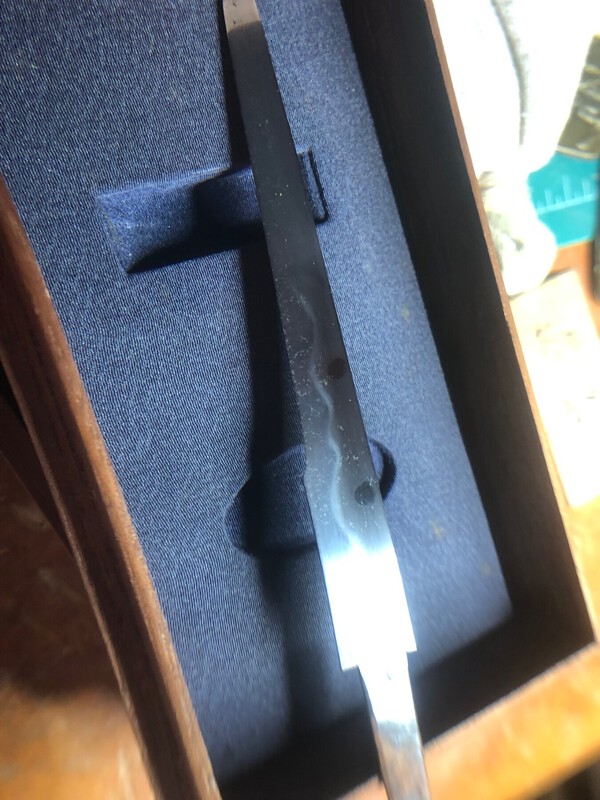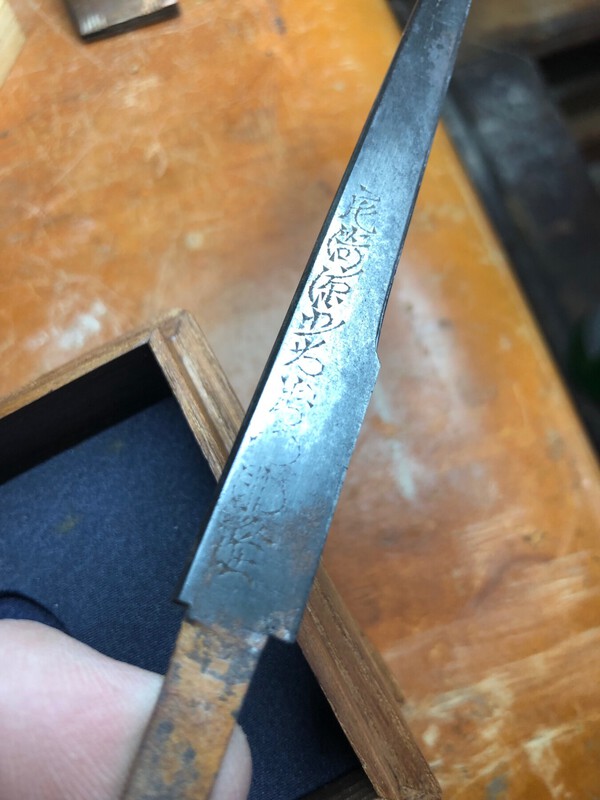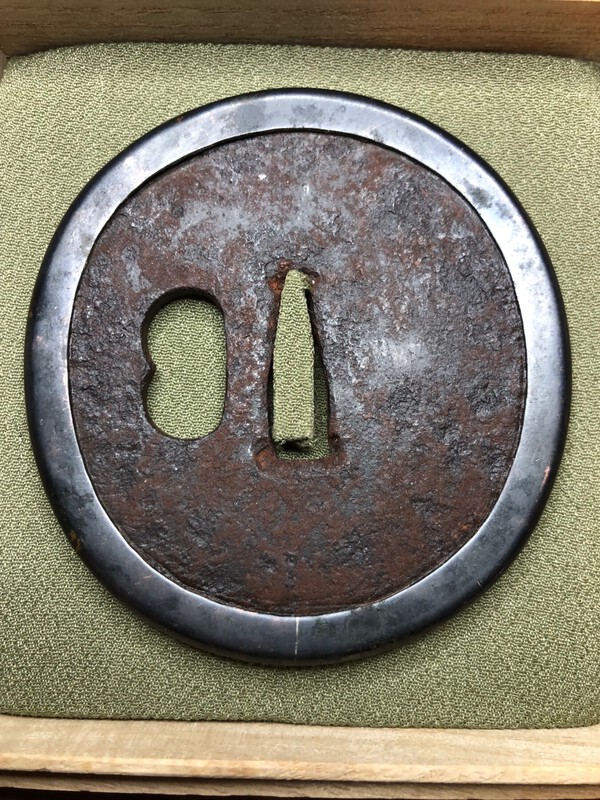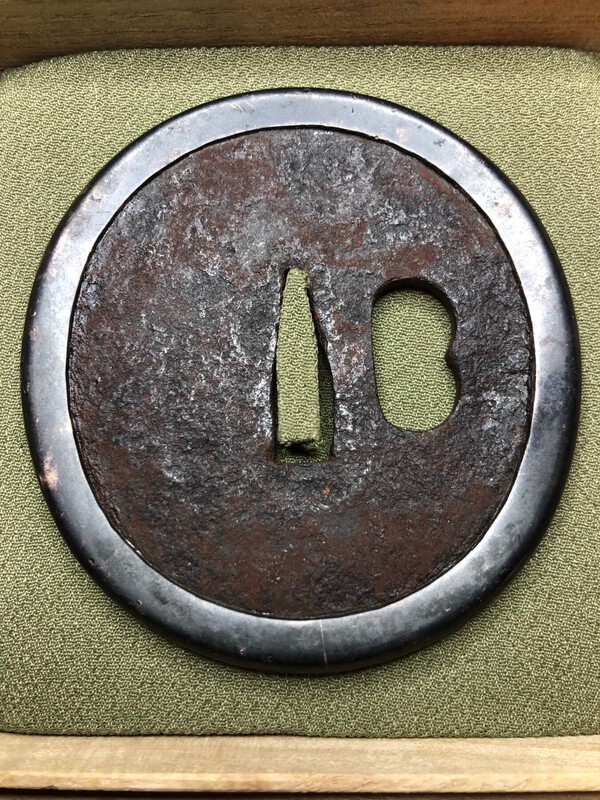
Ron M
Gold Tier-
Posts
138 -
Joined
-
Last visited
Content Type
Profiles
Forums
Events
Store
Downloads
Gallery
Everything posted by Ron M
-
Bought as Chinese fake but wondering. Nakano Eizo ?
Ron M replied to Forte's topic in Military Swords of Japan
It is definitely a Chinese sword. Period -
-
-
Ahh that’s a good one too.
-
I agree, cast in copper and cleaned up then patinated
-
Hello and good evening, I don’t see any seams, nor flash from casting but this looks like it’s bronze or copper. Probably a molded piece, but not really sure what all I see. Thank you for any insight.
-
Unfortunately this is a Chinese fake swords’ tang..therefore, it is jibberish. I’m sure others will agree
-
I second what Seth states. I agree on his thoughts and also add that, with very few exceptions, a Japanese smith would never finish a tang (nakago) like this
-
Hoshu Takata Fujiwara ? Kage maybe…not sure 豊州高田住藤原 ? 景
-
No it’s probably for a wak but why only have a kogai and not a kogatana, as they are extremely popular and you can find more than of kogai. So what makes kogai so special that this tsuba clearly shows the preference
-
No, the caption only describes the abalone using Aogai. It’s very unique so far but hell may be a meh to some of these folks
-
Hello, I have a saya with this decoration in it and found this pic in a Ginza magazine. I know the abalone if Aogai but what are the swirls called and made from? I believe they look like sanded rattan. thank you and regards
-
Looking for second opinions
Ron M replied to Cream Cheese's topic in General Nihonto Related Discussion
Not a lot to see. The koshirae seems legit tho the seppa are installed together on the same side which is incorrect. Not much to say about the rest except looks legit. good luck with what you decide -
Pre-Purchase Questions (Blue saya/leather seppa/hamon)
Ron M replied to Ghoul414's topic in Military Swords of Japan
So far I don’t see anything out of the ordinary. The blue is probably horn and the light is reflected. The bent seppa is probably from someone being to quick to take apart/reassemble everything. Leather seppa were acceptable as they could quiet any type of rattling or just to take space. As for the hamon, it doesn’t appear to be a “standard oily” hamon but hard to tell. If the price is reasonable then I would go for it. regards -
I have been looking around. What do you think of possible Sengo school? They used this nakago and Sugata. Regards
-
Hello folks, putting up some pics of this wak I picked up recently. My initial reaction to taking the tsuka off was “Soshu” and then seeing the mei. Jihada is something I’m still learning about, so pics tell most info. Thank you for your words of you want to say. Regards
-
PM sent
-
I got it. Thank you
-
Good afternoon again, please see the pictures of this little blade and any thoughts you may have. I posted before for the translation and have been looking around and found another . Thank you as always. Ron
-
Amahide himself, let alone the shop he was running and his students and partners, did a lot of experimenting and making some crazy blades. I have a fully forged gunto katana but radically oil quenched with a wild result. Yours was probably the cooler and more tamer examples of their work with hamon and steels. Others in here definitely know more. Regards
-
Hello All, my apologies if I have posted this before. I have this large tsuba, 85mmx80mm, 6mm thick. Probably not much to know but thoughts on why someone would take time to put the rim on and old turd. If you look at the pics closely there are some gouged or engraved lines on the plate following the shape of the fukurin. Plate is flat except where metal has been rusted away. Shape of Ana is sea cucumber? Fukurin seam is at the 5:30 position on tsuba. Heavy and possibly old. Thanks
-
I am so far still not finding much except: 1) using the nashiji-zogan technique in this way are Omori, Kumagai, and Goto. 2) Kaga does use these little windows (clouds) shapes but usually have regular inlay. Goto almost always has the nanakoji background somewhere on the piece. so still at a loss for study but having a good time 😉



